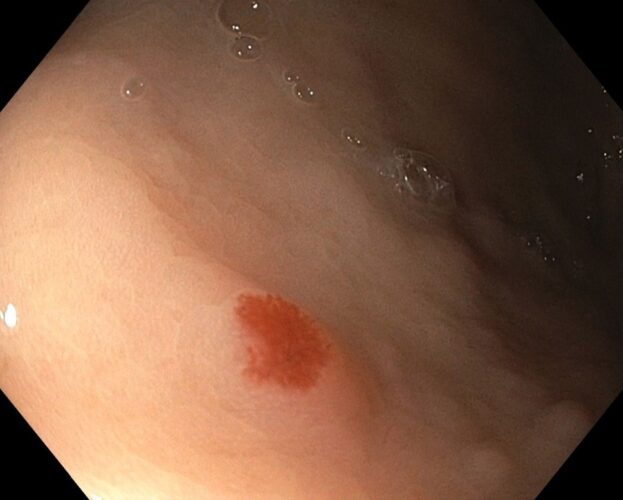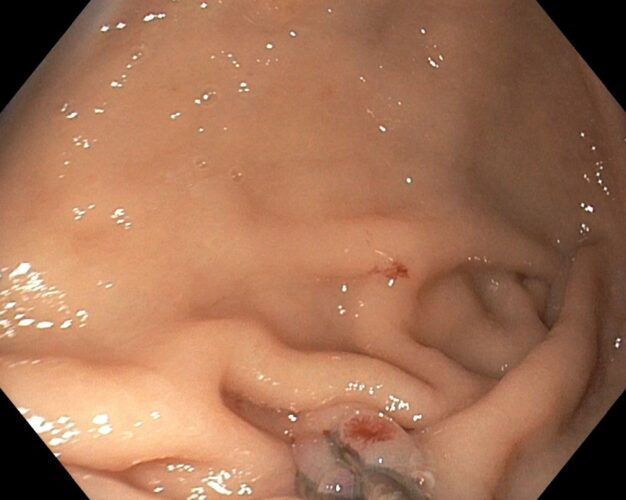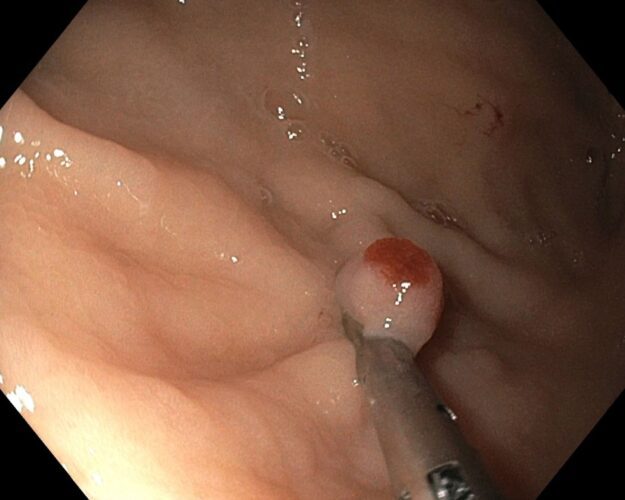Case 3: A 74-Year-Old Man with a Bioprosthetic Aortic Valve
This 74-year-old man was referred to the gastroenterology clinic for iron deficiency anemia and a three month history of melena stools. His other medical history is notable for a bioprosthetic aortic valve replacement two years ago for severe aortic stenosis. On upper endoscopy, the two lesions below were noted. What do they represent?





These lesions are angiodysplasias, which are dilated, tortuous, and usually small (<10 mm) blood vessels. Angiodysplasias are the most common vascular malformation of the GI tract in the general population, and tend to be found in patients over the age of 60 such as in this patient, although they can occur earlier in patients with chronic kidney disease. They can be found in the upper GI tract, small bowel, or colon. Patients can be asymptomatic, or can present with GI bleeding, ranging from slow chronic bleeding to brisk, life-threatening bleeds.
Bleeding from angiodysplasias has been noted to be associated with aortic stenosis in what is known as ‘Heyde’s Syndrome’. This relationship has further been supported by the cessation of chronic GI bleeding in the vast majority of patients with AS after aortic valve replacement (although evidently, not for the patient in this case).



The gastric lesions were treated with endoscopic clipping monotherapy. In the same manner, several angiodysplasias noted during colonoscopy were also treated. The patients clinical symptoms and anemia began to improve shortly thereafter:

